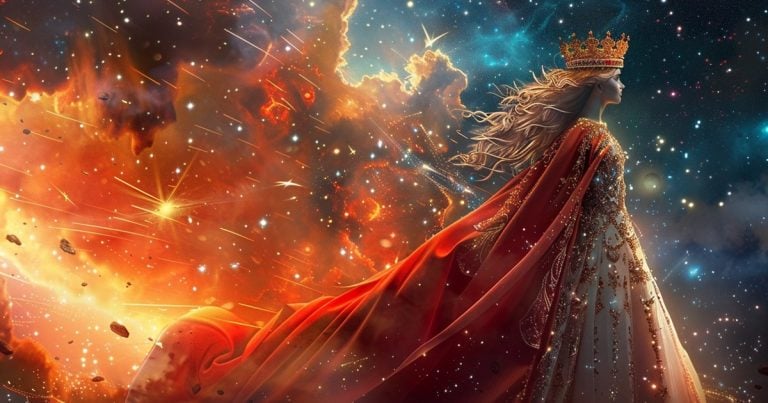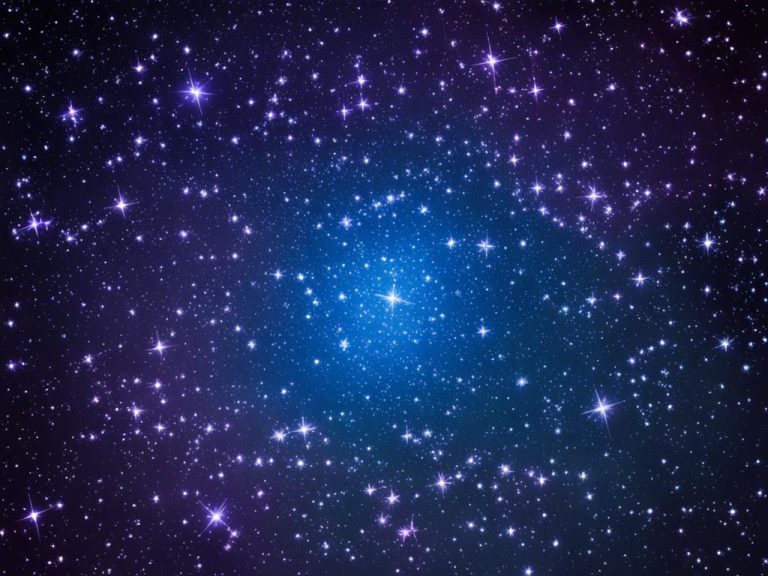Unveiling the Beauty of Cassiopeia: A Timeless Constellation
Modified: June 28, 2024 Author: International Star Registry
Did you know that Cassiopeia is a star group? It is always in the sky in the northern part of Earth. This group of stars has many secrets for us to find. Come with me to learn more about the mysteries of this star group, Cassiopeia.
Key Takeaways:
- Cassiopeia is a circumpolar constellation visible year-round in the northern hemisphere.
- Its distinct “W” or “M” shape and prominent position in the sky make it easy to locate.
- Cassiopeia is rich in mythology, with a captivating story behind its place in the night sky.
- From its notable stars to deep-sky objects, Cassiopeia offers a wealth of astronomical wonders for stargazers.
- The constellation’s proximity to the Andromeda Galaxy opens up a gateway to exploring even further into the cosmos.
The Cassiopeia star group is famous for its stories. In Greek stories, Cassiopeia was a queen who liked to show off. She was punished by being put in the stars. This makes Cassiopeia a special group of stars in the sky. The story makes these stars more interesting to us.
But, Cassiopeia doesn’t just have stories. It has beautiful stars too. Alpha Cassiopeiae, known as Schedar, is a bright star. It looks golden in the night sky. Beta Cassiopeiae, or Caph, is also stunning. It looks blue-white from Earth.
Cassiopeia has stars that come in pairs as well. Gamma Cassiopeiae is one of these. It changes how bright it looks sometimes. Eta Cassiopeiae has two stars that go around each other. It takes 480 years for them to complete one circle. Imagining this dance is fascinating.
When we look deeper into the sky, we find more than just stars in Cassiopeia. The Bubble Nebula is one of these finds. It is like a bubble floating in space. The M52 cluster is another. This cluster is full of stars, about 100 of them.
Cassiopeia also helps us see the Andromeda Galaxy. This galaxy is very far from us. It’s amazing to see with a telescope. Using Cassiopeia, we can find this beautiful galaxy in the sky.
Cassiopeia is important in both science and culture. People love to look at its stars and learn its stories. There is much to see and discover in Cassiopeia.
Next time you look up at the sky, try to find Cassiopeia. It has stories, beautiful stars, and it shows us the way to amazing galaxies. Cassiopeia makes looking at the stars fun and interesting.

How to Locate Cassiopeia Constellation in the Sky
Finding Cassiopeia in the night sky is fascinating. It looks like a big “W” or “M” and shines bright. You can see it high up from October to November. In the Northern Hemisphere, it’s there all year. Also, you can spot it in the north of the Southern Hemisphere in late spring.
First, look for Ursa Major, the Big Dipper, and Ursa Minor, the Little Dipper. Start from the “handle” of the Big Dipper to the second star. Then, follow that line to the North Star, Polaris, at the tip of the Little Dipper. Keep going in that direction, and you’ll find Cassiopeia.
Cassiopeia has five bright stars that make an impressive “W” shape. You don’t need a telescope to see it. The “W” is about 40 degrees wide in the sky. It looks like a giant “M” or “W,” depending on the season and time of night.
If you live north of 40 degrees, Cassiopeia is always visible. This is because both Cassiopeia and the Big Dipper are always above the horizon. So, even on bright moonlit nights, you can still enjoy Cassiopeia’s beauty against the dark sky.
To find out more about Cassiopeia’s stories and star maps, check out ThoughtCo, EarthSky, and TheSkyLive.
References:
- ThoughtCo: Cassiopeia Constellation
- EarthSky: Constellation Cassiopeia – The Queen
- TheSkyLive: Cassiopeia Constellation
Notable Stars in Cassiopeia Constellation
The Cassiopeia constellation stars shine in the night sky. Astronomers and fans have admired these stars for ages. They are beautiful and very important in our studies of space. Cassiopeia stars include:
One standout star is Alpha Cassiopeiae, or Schedar. It sparkles as an orange giant about 230 light-years away. Its bright color makes it easy to see in the constellation.
Beta Cassiopeiae, or Caph, is another top star. It is a blue-white star about 54 light-years from us. Its beauty lights up the night sky.
Gamma Cassiopeiae is quite interesting. It changes in brightness, catching the eye of scientists. This star might actually be two stars circling each other very closely.
Eta Cassiopeiae is special too. It is a pair of stars that dance around each other every 480 years. This dance makes Cassiopeia even more magical.
Together, these stars make Cassiopeia a wondrous place in the sky. Their patterns and glow draw in anyone who loves to look at stars, whether they are experts or just enjoy looking up at night.
Astronomical Significance of Cassiopeia Constellation
The Cassiopeia constellation is a key part of astronomy. Its W or M shape is well-known and seen all year in the north. It’s a guidepost in the sky for those who study stars.
Cassiopeia has been exciting scientists for a long time. It offers details on how stars change and the vastness of space. A closer look at Cassiopeia helps us know more about stars.
Cassiopeia shines with special stars like Gamma Cassiopeiae and Ruchbah. These stars come in different colors and sizes. They add beauty and scientific value to the constellation.
Cassiopeia also has cool things in deep space. For example, there are star clusters like NGC 457. These clusters teach us about how stars group together and the structure of space.
Supernova Remnant: Cassiopeia A
In Cassiopeia, there’s a special star explosion site called Cassiopeia A. This event happened about 300 years back. It tells us a lot about stars’ lives and spreading materials in space.
Cassiopeia A, or Cas A, is very detailed when seen with special tools. Studying it has helped a ton in understanding star explosions. It also helps with knowing more about neutron stars and black holes.
Cassiopeia keeps astronomers excited with its endless secrets. It’s a key area for discoveries in astronomy. Whether you’re into stars or just like looking at the sky, Cassiopeia is truly breathtaking.
Cassiopeia A – The Supernova Remnant
The Cassiopeia constellation has a unique “W” shape. It’s home to many amazing sights, including Cassiopeia A. It’s a supernova remnant from an explosion 340 years ago.
Cassiopeia A is the youngest known galaxy-based supernova remnant. It helps astronomers learn about supernovas. They study it to understand these massive stellar events.
The James Webb Space Telescope from NASA has taken detailed pictures of Cassiopeia A. These images show the remnant’s structure and what it’s made of. Scientists learn about the star that exploded by looking at them.
By looking at Cassiopeia A, we learn about stars and the elements in space. Astronomers can figure out the remnant’s age. This helps us understand how stars evolve and change the universe.
Studying Cassiopeia A helps us know more about supernovas. It improves our models of the universe. This remnant shows the universe’s power and beauty, inspiring everyone who looks up at the stars.
Keep reading to learn more about the Cassiopeia constellation and its wonders.
International Star Registry – Name a Star after Someone in Cassiopeia
International Star Registry lets you buy a star for someone. It’s great for birthdays, anniversaries, or any special time. By getting a star package, you give your loved ones a part of the sky.
When you name a star after someone, you get a cool certificate. It has the star’s coordinates and a star map. This certificate is a beautiful reminder of the universe.
Since 1979, International Star Registry has been naming stars. They make sure your star is recorded and known forever. You can count on them for a star that lasts.
By naming a star in Cassiopeia, you make a touching gift. You also support the love of astronomy. The Cassiopeia constellation is a timeless beauty in the night sky.
To name a star in Cassiopeia, go to International Star Registry’s website at starregistry.com. Don’t miss this chance to give a gift that’s truly special.
For those enchanted by the celestial wonders of Cassiopeia, there exists a unique opportunity to immortalize a special moment or loved one among the stars. Through International Star Registry, individuals can name a star within the Cassiopeia constellation, forever marking it as a symbol of love, remembrance, or celebration.
Naming a star is a heartfelt and meaningful gesture, perfect for commemorating birthdays, anniversaries, or any special occasion. Imagine the joy of receiving a personalized certificate, adorned with the chosen star name and its celestial coordinates, a timeless reminder of love and affection.
Cassiopeia – Inspiration for Artists and Poets
The beauty and stories of Cassiopeia have inspired artists and poets for ages. Its shape looks like a “W” or an “M”, and has amazed people looking at the stars for hundreds of years.
Its name comes from Greek tales, about the queen Cassiopeia and her beauty. It’s in the sky’s north, making it visible to many old civilizations.
Artists find Cassiopeia enchanting, showing its beauty in paintings and sculptures. Its story and look inspire endless creativity in art.
Poets use Cassiopeia to talk about beauty and life’s shortness. It represents our wish to know more about the universe.
Cassiopeia’s Influence on the Arts
Cassiopeia is still loved today by artists and poets for its mystery. It stands out in the sky, making people wonder and dream.
This constellation is a favorite among celebrities. Some celebrities that have their very own stars named in Cassiopeia include Oprah Winfrey, Emma Watson, Jamie Lee Curtis, Cameron Diaz, Danielle Harris, Faith Hill, and Shirley Jones.

The Cassiopeia Constellation, with its unique shape, is a wonder in the night sky. It’s inspired many to create, from poems to new art forms.
Whether through paintings or writings, Cassiopeia remains a big inspiration. It reminds us of our link to space, and the unknown.
Looking at Cassiopeia, artists and poets see more than stars. They see a story that inspires beautiful, deep creations.
Cassiopeia – An Astronomer’s Delight
For astronomers and stargazers, Cassiopeia is a favorite. It is one of 88 constellations in the sky. Cassiopeia is shaped like a ‘W’ or ‘M’. It covers a big part of the sky at 598 square degrees.
This constellation has 157 stars that you can see without help. They are as bright as 6.5 on the scale. There are five main stars. Alpha Cassiopeiae, which we call Schedar, is the brightest star. It shines with a magnitude of 2.2.
Cassiopeia is special because of its deep-sky wonders. It is home to beautiful sights like Messier 52, an open star cluster. Another cool thing is the Pacman Nebula (NGC 281). It looks like the Pacman video game character.
Studying Cassiopeia helps us learn about space’s secrets. It’s also linked to famous people. Stars in this constellation celebrate Oprah Winfrey, Emma Watson, Jamie Lee Curtis, and Cameron Diaz.
You can see Cassiopeia all year above 34°N. November is a great time, especially at 9 p.m. A telescope helps you see more, like obscure stars and details.
Cassiopeia inspires those who love space. It’s a great place for astronomers. They learn about stars, planets, and more. Whether by sight or photo, Cassiopeia is out of this world.
- International Star Registry – Cassiopeia Constellation
- Wikipedia – Cassiopeia (constellation)
- Astronomy.com – Cassiopeia Delights
Discovering the Andromeda Galaxy through Cassiopeia
Cassiopeia is like the queen of the night sky. It’s beautiful and helps us find the Andromeda Galaxy. This galaxy, also known as M31, is a big spiral galaxy near our Milky Way. It’s 2.5 million light-years away, which is mind-blowingly far.
To see the Andromeda Galaxy with Cassiopeia, look for its “W” or “M” shape. Start at Schedar on the left, then go to Caph on the right. You’ll find a soft glow – that’s the Andromeda Galaxy. It’s the biggest galaxy we can see without a telescope.
Andromeda is not alone. It’s in a group of about 30 galaxies, including our Milky Way. Though the Milky Way has up to 400 billion stars, Andromeda has about a trillion. Together, their stars create amazing spiral patterns in space.
Cassiopeia also leads us to M32, a small galaxy near Andromeda. It’s 24 arcminutes south of M31. M32 looks like an oval and is very interesting to see. Another galaxy, NGC 185, is just a bit north and looks fairly bright.
NGC 147 is west from there and looks small. These galaxies help us understand more about Andromeda’s size and structure.
Watching the Andromeda Galaxy through Cassiopeia is unforgettable for all sky lovers. It shows us the vastness of space beyond our own galaxy. For more sky wonders, check out this astronomer’s guide.
If you’re keen to learn more about Andromeda and its stars, visit this page for great info.
Cassiopeia – A Window into Cosmic Dust and Origins
Cassiopeia is key in learning about where cosmic dust comes from. We know young galaxies in the past were filled with lots of dust. This came from supernovae like the ones in Cassiopeia. They spread elements, which helped form planets and make life possible.

Cassiopeia helps us see how the universe was made and how we fit in it. The stars and dust in this area tell us about making and changing celestial bodies. Scientists look at the dust in Cassiopeia to learn how galaxies, stars, and our solar system formed.
Dust from Cassiopeia helps form planets and much more. Learning about this dust teaches us about making new worlds. It also makes us wonder if life can exist elsewhere.
The stars in Cassiopeia shine bright, surrounded by cosmic dust. The group of stars looks like a “W” or “M.” People have been amazed by its beauty and meaning for a long time.
Studying Cassiopeia shows the vastness and amazement of space. New findings help us learn more about our beginning and the possibility of life in space. Looking at Cassiopeia, we feel part of a story that spans billions of years.
Conclusion
The Cassiopeia constellation is a captivating part of the night sky. It provides many chances for us to observe, study, and enjoy it. With its unique “W” or “M” shape and deep mythology, Cassiopeia is special to both astronomy and our imaginations.
It includes bright stars and distant celestial bodies. These features open a window to the endless mysteries of the universe. Cassiopeia has importantly helped in scientific findings. It continues to excite astronomers with its importance in the night sky.
What’s more, Cassiopeia has influenced culture and art. It has been a source of inspiration for artists and poets over the ages. Its charm and meaning have deeply affected how we see the cosmos and where we fit in it.
No matter if you love looking at stars or do it from time to time, look for Cassiopeia. Let its beauty and celestial importance spark your interest. It will remind you of the universe’s grandeur and splendor.
FAQ
What is the Cassiopeia constellation?
The Cassiopeia constellation is famous in the northern hemisphere. It is known for looking like a “W” or “M”.
What is the mythology behind Cassiopeia?
Cassiopeia was a queen in Greek myths, very beautiful but too proud. For her vanity, she’s now a star, forever rotating in shame.
How can I locate the Cassiopeia constellation in the night sky?
To find Cassiopeia, look for the Big and Little Dippers. Know the stars at the Big Dipper’s “handle”? Follow the line to the North Star, then past it to see Cassiopeia’s “W” or “M”.
What are some notable stars in the Cassiopeia constellation?
Some of the bright stars are Schedar, Caph, and others like Gamma Cassiopeiae and Eta Cassiopeiae.
What is the astronomical significance of the Cassiopeia constellation?
Always above, Cassiopeia is vital for night sky navigation. It’s also a host to cool things in space.
What is Cassiopeia A?
Cassiopeia A marks a supernova’s fading glow. It’s a young, 340-year-old reminder of a star’s powerful end in our Milky Way.
How can I name a star in the Cassiopeia constellation?
Name a star after someonein Cassiopeia via International Star Registry. They’ll give you a special certificate and map.
How has Cassiopeia inspired artists and poets?
For ages, Cassiopeia’s myth and form have captivated creative minds. They’ve appeared in many artworks and stories.
What makes Cassiopeia an astronomer’s delight?
With its bright stars and unique pattern, it’s loved by sky watchers. Its year-round presence teaches us about the universe.
How can I discover the Andromeda Galaxy through Cassiopeia?
Connect Schedar and Caph with an invisible line. It leads to the faint, yet vast, Andromeda Galaxy, our cosmic neighbor.
What role does Cassiopeia play in understanding cosmic dust?
It’s thought that Cassiopeia’s stars help create cosmic dust. Studying it might help us learn about planet formation and life’s origins.
Source Links
- Webb Reveals Never-Before-Seen Details in Cassiopeia A – NASA – https://www.nasa.gov/universe/webb-reveals-never-before-seen-details-in-cassiopeia-a/
- Complex Things in Simple Words | What is interesting about the constellation Cassiopeia? – https://universemagazine.com/en/complex-things-in-simple-words-what-is-interesting-about-the-constellation-cassiopeia/
- Cassiopeia: The Queen of the Night Sky – https://stargazingireland.com/cassiopeia/
